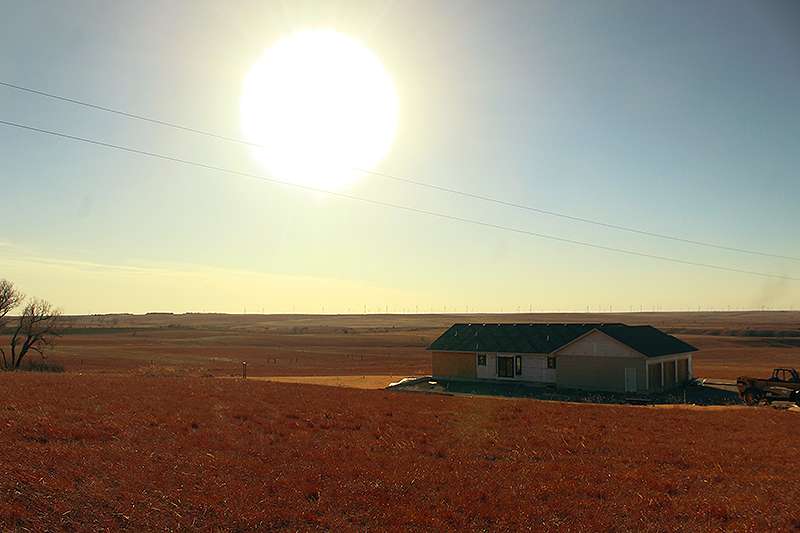
By CRISTINA JANNEY
Hays Post
Logan Glaze stood in a shed on the Johnson Ranch as the wind whistled through the eaves of a barn on a recent December day.
It was another red flag warning day with winds forecast to gust 60 mph.
Days like this are difficult for ranchers like Glaze, whose house near the corner of U.S. 183 and Homestead Road burned to the ground on Dec. 15, 2021, in the Four County Fire.
Glaze was on his employers' homestead in a valley about a half mile away when the fire started racing across the prairie. His wife, Kacey, and two children — Sage, 5, and Rhett, 2 — were barely able to escape flames before the wildfire took their home and everything in it.
RELATED: Third-generation rancher gives up ag; financial effects of Four County Fire may last years
“I tried to head to the house but flames and smoke were over the road. I called Kacey and told her to get out— leave. About the time they left the house, that’s when the flames started getting close," he said.
Stacy Campbell, K-State Extension agent from Hays, captured the fire on a trail camera. The camera also recorded the temperatures as the fire burned through the area.
“I didn’t know if the house was OK," Glaze said. "It was creeping down here to this farmstead. I got in the loader tractor and kept scooping dirt on the fire to keep it out of our hay stacks and keep it out of this yard.”
Glaze's employer, Dennis Johnson, loaded his elderly mother in a car with his wife to evacuate. The fire came yards from burning both his and his mother's 100-year-old home. The family has been on that homestead since 1897.
Although the homes were saved, 2,000 acres of Johnson's land burned.
“The fire was just so big," Johnson said, "the resources were overtaxed and of course that wind — the wind was so strong."
Johnson had to euthanize a bull and sell two other cattle that were badly burned. Some ranchers were hit harder, losing hundreds of cattle — most of their herds — to the blaze.
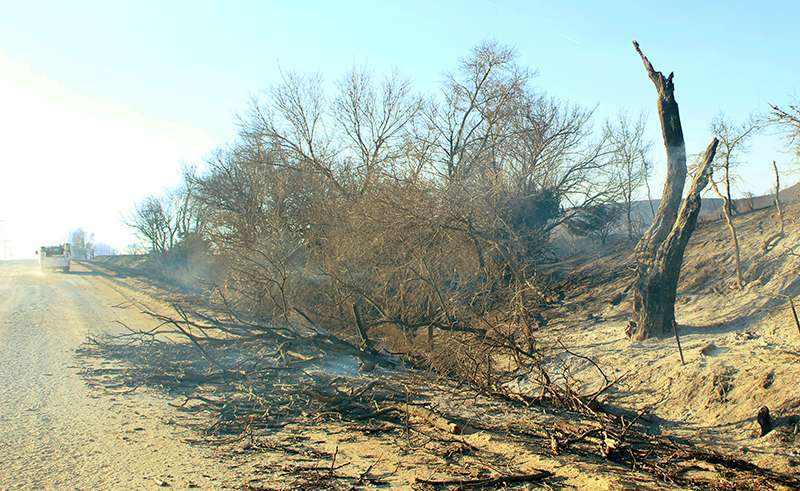
Scoured earth
A year later, ranchers are still trying to recover from the fire. Homes and barns are still in the process of being rebuilt. Ten homes and 16 other structures were destroyed just in Ellis County. Miles of fence were destroyed and some has still yet to be replaced.
Two people died as a result of the fire. 36-year-old Derrick Kelley's remains were found near his burned vehicle. An 84-year-old rancher, Richard Shimanek, who lived near the city of Leoti, was injured while trying to save his home and died later in a Denver hospital.
About 164,000 acres of grassland burned in Ellis, Russell, Rooks and Osborne counties. The windstorm and wildfires caused more than $2.3 million in damages.
Several years of good rains had resulted in heavy growth of vegetation —or fuel as it is known to the fire service. Winds up to 100 mph and a high fuel load meant the fire burned faster and hotter than a typical Kansas wildfire.
"If you look closely right where that fire burned, especially when that first wave of fire went through where the wind was blowing so hard,” Johnson said. “Those agronomy people said that the land was scoured.”
Drought has significantly slowed the regrowth of the grass in pastures, which has meant the farmers who did not lose cattle in the fire still had to cull their herds.
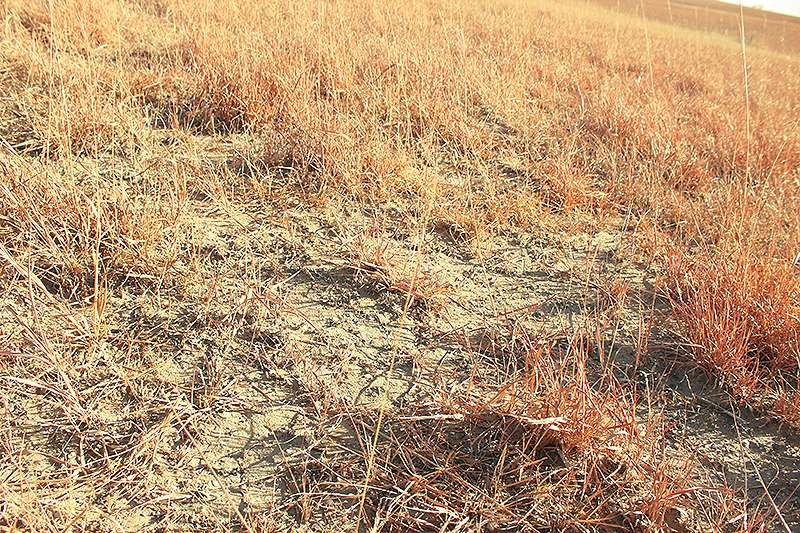
According to K-State research, in a year with average to above-average rainfall, ranchers could expect about 50 percent of the grasses to come back in the first year after a wildfire, said Stacy Campbell, K-State Extension agriculture and natural resources agent in Hays.
The next year, the next 50 percent would be expected to come back, he said.
“I was talking to one rancher, and he thought it was more like 30 percent,” Campbell said of the pasture regrowth this year.
Recovery still years away
Johnson was only able to graze his cattle on the burned pastures for about two weeks. Those same cattle normally would have been on that grass all summer.
“As dry as it has been all year, I would expect next year to be short also,” he said. “We’ve had to cull cows. We’ve had to sell a third of the cows this year.”
In the short term, ranchers have the proceeds from the cattle they were forced to sell, but those cattle will not be producing new calves for next year.
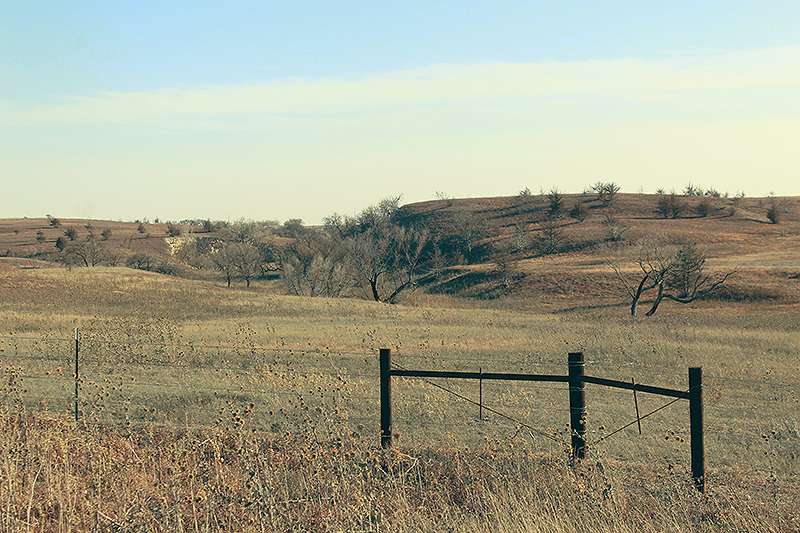
“We’re going to be impacted by this for several years,” he said, “regardless of how much it rains. There is no way of knowing what next year will bring as far as the weather."
Ground cover whether on crop or grassland helps protect the soil from wind and rain erosion. That was wiped away by the fire, Johnson said.
"The other thing I have noticed is that the wildlife is just not there the way it was,” he said. “The small animals all in that area I am sure would have all perished. There was no way they could escape from it.”
Not only did Johnson have to feed his herd during the summer and fall, but the ranch also had about half as much hay as it normally would going into the winter.
“We’re going to be scraping the bottom of the barrel come spring. We’ll have enough feed to get through the winter, but there won’t be much carryover," Glaze said.
Still on alert
Beth Christian, High Plains Mental Health therapist and outpatient supervisor in the Osborne office, said the fire and drought have been added stressors to the normal burdens of being a farm family.
“One of the things about being a farmer is that there is very little that you control in that industry,” she said. “You can’t control the weather. You can’t control the markets. A lot of your decision-making is based on 'I hope this is going to be what it looks like in a month or two from now.' 'I hope it's going to rain.' "

The anniversary of the fire may be additionally problematic for those who were affected, Christian said.
“They may not be able to name why they’re feeling that way until the date of the event occurs. Then they look back and realize I was starting to think about that when I didn’t realize it. Sometimes our bodies will react to the trauma before our brains connect the dots of that it is because of this year's event,” she said.
When the wind blows, many like Johnson and Glaze still feel the trauma from fire.
“I still wake up at night when I hear that wind blowing,” Johnson said during a recent red flag warning. “We’ve had that the last two or three nights. I wake up, and that wind is blowing. That is stressful.”
Dr. Lauren Mack and her Plainville clinic cared for animals that were injured in the fire. She has seen the effects on her own staff and the ranchers she works with daily. She said the fire affected everyone in the Plainville community, just on a different scale.
“I can tell you everyone is really antsy when the wind is up and it's dry and we’re in a high fire warning. We all look at each other and go, ‘We’re going to do it again?’ " she said.
“We weren’t that far from losing Plainville. That was the things that went through a lot of our minds. There is no rule saying you can’t take a town or take a whole community. I think it should make everyone a little antsy."
Never too late to ask for help
Christian encouraged friends and family of survivors of the fires to look for signs that loved ones may be isolating or getting out of their normal routines.
“Do a little more diligence on checking on them. Say, 'Hey, lets get together.' 'Do you have time for coffee?' 'Do you have plans for supper?' Try to make sure people aren’t isolating—they're trying to avoid situations or places that might remind them of that event.
“We want to help people make new memories on that date so it's not always looking back on that date as a scary terrifying thing,” she said.
It’s never to late to seek help, she said.
“This is a grief process people are going through, and there is no timeline on that,” Christian said. “A year or two or three out from that event, it’s never wrong to reach out for help. It’s never too late to get some support.”
High Plains Mental Health has therapists on staff who have farming backgrounds and who have been trained in assisting agriculture workers. Telemedicine means farmers and ranchers can schedule phone or Zoom appointments and don't have to come into one of the High Plains' offices for treatment.
High Plains has a 24/7 crisis hotline, (800) 432-0333, people can call anytime to speak to a therapist. 988 is the new national crisis helpline. You don’t have to be suicidal to call one of these lines. You can also text the crisis line at 741741.
High Plains provides a sliding-fee scale for individuals who are uninsured or underinsured.
Farmers and ranchers can also find assistance online at Kansas Ag Stress Resources.
'We were fortunate'
The Johnsons and Glazes said they feel fortunate the fire didn't rob them of more.
“We were fortunate,” Johnson said. “It could have been a lot worse. Had the wind been coming from a slightly different angle, we would have lost everything.”
“As it was, we lost a lot of stuff, but we can come back from it. We should be able to come back from it in a couple of years,” he said.
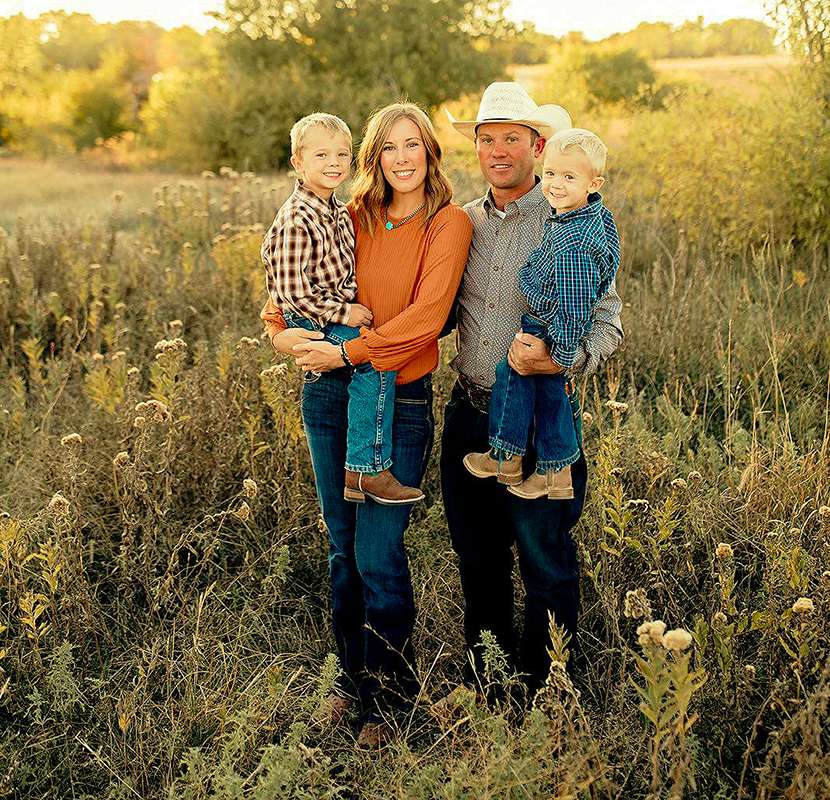
The fire happened right before Christmas, but Logan said so many people donated gifts for the kids they didn't know the difference. Rhett was too young to understand anything beyond his family lost their house. Sage understood more.
“They’re excited to get a new house,” Glaze said.
“It’s been tough at times,” Glaze said. “We still have to take care of the daily stuff, plus we have to figure out how are we going to rebuild and who are we going to get, just all of those decisions to make.”
In addition to local donations through GoFundMe accounts, the Kansas Livestock Foundation raised and distributed $2 million in fire relief.
Without the donations, Glaze said, getting through the fire would have been tougher.
“I’m thankful for all of the help that we had—everybody that came out and helped and supported us through all the donations," he said. "It was just unbelievable.
“We lost the house, and that set us back a couple of years, but the good thing is that everybody was OK."






